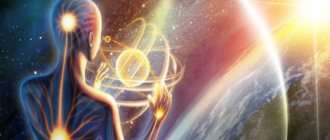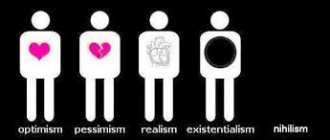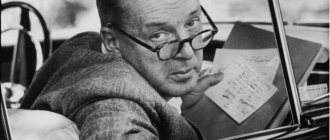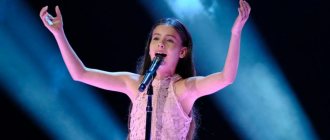Creativity is a process of human activity, the result of which is the creation of new quality material and spiritual values, distinguished by uniqueness, originality and originality. It originated in ancient times. Since then, there has been an inextricable connection between him and the development of society. The creative process involves imagination and skill, which a person acquires by acquiring knowledge and putting it into practice.
Creativity is an active state and a manifestation of human freedom, the result of creative activity, it is a gift given to a person from above. You don’t have to be great and talented to create, create beauty and give people love and kindness to everything around them. Today, creative activities are available to everyone, since there are different types of arts, and everyone can choose an activity to their liking.
Decorative creativity
This is a type of plastic art, which includes decorative design of the interior (decorating a room using easel painting) and exterior (using stained glass and mosaics), design art (using industrial graphics and posters), and applied art.
These types of creativity provide a unique opportunity to get acquainted with the cultural traditions of their people, foster a sense of patriotism and great respect for human work. Creating a creative product instills a love of beauty and develops technical abilities and skills.
Applied creativity
It is a folk decorative art designed to decorate people's lives and everyday life depending on their requirements. By creating things of a certain shape and purpose, a person always finds a use for them and tries to preserve the attractiveness and beauty seen in them. Objects of art are inherited, from ancestors to descendants. They reveal folk wisdom, way of life, and character. In the process of creativity, a person puts his soul, feelings, and his ideas about life into works of art. This is probably why their educational value is so great.
Carrying out archaeological excavations, scientists find various things and household items. They determine the historical era, relations in the society of that distant time, conditions in the social and natural environments, the capabilities of technology, financial situation, traditions and beliefs of the people. Types of creativity can tell us about the kind of life people led, what they did and were interested in, how they related to everything around them. The artistic features of works of applied art instill in a person respect for the culture and heritage of the nation.
Creativity criteria
Creativity criteria:
- fluency - the number of ideas arising per unit of time;
- originality - the ability to produce unusual ideas that differ from the generally accepted ones;
- flexibility. As Ranko notes, the importance of this parameter is determined by two circumstances: firstly, this parameter allows us to distinguish individuals who show flexibility in the process of solving a problem from those who show rigidity in solving them, and secondly, it allows us to distinguish individuals who are original solve problems from those who demonstrate false originality.
- receptivity - sensitivity to unusual details, contradictions and uncertainty, willingness to quickly switch from one idea to another;
- metaphoricality - readiness to work in a completely unusual context, a penchant for symbolic, associative thinking, the ability to see the complex in the simple, and the simple in the complex.
- Satisfaction is the result of creativity. With a negative result, the meaning and further development of the feeling are lost.
According to Torrance
- Fluency is the ability to produce a large number of ideas;
- Flexibility - the ability to use a variety of strategies to solve problems;
- Originality - the ability to produce unusual, non-standard ideas;
- Elaboration is the ability to develop emerging ideas in detail.
- Resistance to closure is the ability not to follow stereotypes and to “stay open” for a long time to a variety of incoming information when solving problems.
- The abstractness of the name is an understanding of the essence of the problem of what is truly essential. The naming process reflects the ability to transform figurative information into verbal form.
Decorative and applied arts. Types of techniques
What types of applied creativity are there? There are a great many of them! Depending on the method of manufacturing a particular item and the material used, the following handicraft techniques are distinguished:
- Related to the use of paper: iris folding, or rainbow folding of paper, paper plastic, corrugated tubes, quilling, origami, papier-mâché, scrapbooking, embossing, trimming.
- Weaving techniques: ganutel, beading, macrame, bobbin weaving, tatting or knot weaving.
- Painting: Zhostovo, Khokhloma, Gorodets, etc.
- Types of painting: batik – painting on fabric; stained glass – glass painting; stamp and sponge printing; drawing with palms and leaf prints; ornament – repetition and alternation of pattern elements.
- Creating drawings and images: blowing paint through a tube; guilloche - burning a pattern onto fabric; mosaic - creating an image from small elements; thread graphics – making an image with threads on a hard surface.
- Fabric embroidery techniques: simple and Bulgarian cross stitch, straight and oblique satin stitch, tapestry, carpet and ribbon embroidery, gold embroidery, cutwork, hemstitching and many others.
- Sewing on fabric: patchwork, quilting, quilting or patchwork; artichoke, kanzashi and others.
- Knitting techniques: fork; on knitting needles (simple European); Tunisian crochet; jacquard, fillet, guipure.
- Types of creativity associated with wood processing: burning, sawing, carving.
As you can see for yourself, there are a huge number of different types of arts and crafts techniques. Just a few of them are listed here.
Creative people – who are they?
When it comes to people involved in creative work, people usually immediately think of artists, musicians, poets, writers, and less often of scientists. And since these types of activities, due to specific abilities, are not available to everyone, it seems that creativity is some kind of unique gift.
But is it? Try to answer the question yourself: is creativity possible in other types of activities? For example, in pedagogy. Can't a teacher be creative? And the cook? What about the manager, engineer, plumber? Agree that creativity is possible in a wide variety of activities, and it is accessible to everyone. The question is: will everyone take advantage of the opportunity to be a creative person? To understand this, it is worth understanding what creativity is.
Psychological characteristics of creativity
In psychology, creative activity is defined very simply. This is the creation of something new: paintings, music, scientific theories, buildings, mechanisms, culinary recipes, teaching methods, methods of activity, etc. That is, creativity is not a special activity, but its form or level. There are reproductive activities - replication, performing operations according to a model learned by a person during the learning process. And if a person invents something of his own, does it in a new way, then this is already creativity.
Yes, there is artistic creativity associated with specific types of activities that are united under the general concept of “art.” But a musician can also play in strict accordance with a score written by a completely different person - the composer. And the painter can masterfully make copies of paintings. And this is not considered creativity.
But, being possible in any field of activity, creativity requires special qualities and abilities from a person. First of all, these abilities are associated with the cognitive sphere, especially with thinking.
Cognitive sphere of a creative personality
The question of the uniqueness of creative thinking has been of interest to psychologists and philosophers for a long time. But only in the 20th century did they begin to study it seriously. This was due to society's urgent need for creative individuals. Such a need has always existed, but only by the beginning of the last century did society realize that creativity can be effectively used not only in the field of art and science, but also in all other areas of life, including marketing, the creation of new goods and services, and in management etc.
The result of this increased interest was the development of the psychology of creativity and the development of the theory of creative thinking. Thanks to the research of such scientists as J. Guilford, E. de Bono, G. Altshuller, S. Mednik, T. Buzan, Y. Ponomarev and others, the main characteristics of this unusual type of thinking were identified.
- Divergent character. From the point of view of J. Guilford, divergence (direction in different directions) is the main sign of creative thinking. This distinguishes it from convergent, unidirectional logical thinking.
- Imagery. Creative thought is born in the form of an image, as A. Einstein drew attention to. Creative ideas are put into words only in the process of developing and communicating them to other people. Therefore, creativity is most clearly manifested in the field of art, which operates with images.
- Associativity. Associations are connections that arise in the brain between different elements or blocks of information. They help to connect to thinking the most diverse areas of our experience, knowledge, and ideas. The more such associations arise, the more interesting and original thoughts are born.
- Spontaneous activity of the imagination. A creative person not only thinks in images, they are born in his brain spontaneously, without much effort, thanks to his developed imagination.
In addition to special thinking, figurative memory plays an important role in the cognitive sphere of a creative person, helping to retain a lot of useful information, and the ability to focus on one’s activities. Well-controlled, developed attention, combined with imagination, allows creative people to notice the unusual, surprising in the world, something that others do not see.
The role of the volitional sphere
Along with the concept of “creative personality,” the term “creative” is often used. This word itself comes from the English noun creativity - creativity, creative talent. Despite the obvious similarity of these two concepts, there is a difference between them. Creatives are people who are creative, active, and not just endowed with the ability to create.
For people, even with high creative potential, such activity is not always typical. Often the creative process occurs at the level of consciousness, and its results are not always realized in practice. So you can come up with an original, fascinating plot, but you will never write a book. Lying on the couch, you can develop a project for your own business, but never implement it. And if you knew how many brilliant ideas, inventions and artistic masterpieces remained “on the couch”!
To become a creative, active person, creative thinking alone is not enough; you also need strong-willed qualities. After all, you need to develop a brilliant idea, show persistence in proving it, high efficiency in its implementation, not be afraid of difficulties, not give up in the face of failures and be ready for criticism, ill-wishers and envious people. Will in the creative process often plays an even greater role than ability, level of creativity and intelligence.
Area of interest
How are new ideas born and new solutions to complex problems found? In fact, our brain cannot come up with anything completely new; for example, we cannot imagine something that we have never seen if there is no description of it. Creativity is a combinatorial activity, that is, the transformation and combination of elements of previous experience, knowledge, ideas, etc. stored in memory. The information stored in our memory is a building material, and the more it is and the more diverse it is, the better the conditions for creativity .
For a creative person, not only the volume, but also the variety of knowledge is important. This allows you to connect them to solve a variety of problems. And if associative thinking is also well developed, then combining information creates almost unlimited opportunities for creating new things. Thus, creatives are distinguished not only by creative abilities, but also by diverse interests and erudition.
Now the time has come when it would seem that there is no longer any need to remember and store large amounts of information. After all, there are colossal Internet databases where you can find everything. Yes, but they are located outside of our brain, which means they do not participate in the process of creativity, which is largely spontaneous and unconscious. This means that erudition and diverse interests have not lost their importance. Unless, of course, you want to be a creative person.
Folk art
In works of art created by the people, the main thing is selected and carefully preserved; there is no place for unnecessary things. Objects of folk art are endowed with the most expressive properties. This art embodies simplicity and taste. Therefore, it became understandable, loved and accessible to people.
Since ancient times, people have sought to decorate their homes with objects of folk fine art. After all, they retain the warmth of the hands of a craftsman who understands nature and skillfully selects only the most beautiful things for his objects. Failed creations are eliminated, only valuable and great ones remain alive.
Each era has its own fashion for the interior of a person’s home, which is constantly changing. Over time, strict lines and rectangular shapes become more and more preferred. But even today people draw ideas from a priceless storehouse - people's talents.
The role of interhemispheric asymmetry
Interhemispheric asymmetry (Greek b- “without” and ummephsib “proportionality”) is one of the fundamental patterns of brain organization not only in humans, but also in animals. It manifests itself not only in the morphology of the brain, but also in the interhemispheric asymmetry of mental processes.
As part of the ongoing research, the main attention is paid to the connection between hemispheric asymmetry and mental cognitive processes and the effect of damage to individual structures and areas of the brain on the course of these processes. [4]
Two types of thinking are associated with the functions of the left and right hemispheres in humans - abstract-logical and spatial-imaginative. There are several synonyms for this type of thinking. According to V. Rotenberg:
- verbal and non-verbal (since abstract-logical thinking of the left hemisphere is based on the ability to produce language, in contrast to the figurative thinking of the right hemisphere);
- analytical and synthetic (since the left hemisphere of logical thinking analyzes objects and phenomena, while the right hemisphere of imaginative thinking ensures the integrity of perception);
- discrete and simultaneous (since the left hemisphere uses logical thinking to perform a series of sequential operations, while the right hemisphere uses imaginative thinking to acquire the ability to perceive and evaluate an object in one moment).
The right hemisphere, which establishes a specific spatial-imagery context, has been shown to be critical for creativity. Thus, with organic lesions (for example, physical) of the left hemisphere, artists and musicians practically do not lose their artistic abilities, and sometimes even increase the level of aesthetic expression of creativity, but damage to the right hemisphere can lead to a complete loss of creativity. [4]
Of the above three characteristics of spatial-imaginative thinking, the most significant are the last two - its ability to think holistically and at one level about objects and phenomena of the real world. The prevailing views in the literature, according to which the main difference between these two types of thinking is that logical thinking works with verbal material, and figurative thinking with images, seems to be the result of a misunderstanding. In split-brain people, the right hemisphere seems to be able to understand words and simple verbal structures, while the left hemisphere is also quite capable of recognizing pictures. The main difference between these two types of thinking, in our opinion, is determined by how the contextual connection between words and pictures is organized. Left-brain thinking organizes any material used (verbal or non-verbal) in such a way as to create an unambiguous context that is understood more or less equally by different people. Without the creation of such an unambiguous context, social interaction would be impossible. The word itself, taken out of context, does not have a clear meaning at all; on the contrary, in most cases it is ambiguous, which is especially clearly reflected in dictionaries. The word "scythe" can also mean an agricultural tool, a woman's hairstyle, a piece of land extending into the sea, and finally it can have a metaphorical meaning (for example, "death's scythe"). It is the context, i.e. The relationship of a given word to others in a sentence determines the specific and unambiguous meaning of this word. The task of such a contextual organization is to isolate and record only one of the entire possible set of meanings and semantic shades of a word and to establish a linear connection between such single meanings of individual words.
There is now direct evidence of the critical role of right-hemisphere thinking for creativity, which creates a specific spatial and creative context. It turns out that with organic damage to the left hemisphere of the brain, the artistic abilities of artists and musicians are practically not affected, and sometimes the level of aesthetic expression of creativity even increases.
After complete removal of the meningioma in the right hemisphere, the poet, despite complete recovery without defects in everyday thinking and speech, lost the ability to write poetry. A mathematician with a tumor in the right parieto-occipital region lost the ability to solve original problems with complete preservation of logical thinking. In recent years, differences in the distribution of neurons and interneuronal connections between the left and right temporal lobes have also been noted, which is consistent with the described functional differences.
Folklore
This is folklore, which is reflected in the artistic collective creative activity of the common man. His works reflect the life, ideals and worldviews created by the people. They then exist among the masses.
Types of folk art:
- Proverbs are poetic mini-works in the form of short rhythmic sayings. The basis is conclusion, teaching and generalized morality.
- Sayings are figures of speech or phrases that reflect life phenomena. There are often humorous notes.
- Folk songs - they do not have an author or he is unknown. The words and the music chosen for them were formed during the historical development of the culture of a particular ethnic group.
- Chatushki are Russian folk songs in miniature, usually in the form of quatrains, with humorous content.
- Riddles - they are found at any stage of development of society among all peoples. In ancient times they were considered a test of wisdom.
- Pestushki - short melodies of mothers and nannies in poetic form.
- Nursery rhymes are songs and sayings that accompany games with a child’s hands and feet.
- Jokes are funny short stories in poetic form.
- It is impossible to imagine types of folk art without chants, with the help of which people during the spread of paganism turned to various natural phenomena, asking them for protection, or to animals and birds.
- Counting rhymes are small rhythmic rhymes. With their help, the leader of the game is determined.
- Tongue twisters are phrases built on a combination of sounds that make them difficult to pronounce quickly.
What develops creativity in a person?
No one can give a clear, definite answer to the question posed. In order to discover and develop creative abilities, a person must answer the question, what is creativity specifically for him? Harmony can contribute to the development of a person’s creative abilities; it is worth trying to look at the familiar world with different eyes, from a new angle. Having cleared your consciousness, it is much easier to scoop up the new things that the world offers. A true creator lives in every person.
Creativity related to literature
Literary creativity is represented by three types: epic, lyrical and dramatic. They were created in ancient times, but still exist today, as they determine ways to solve the problems posed to literature by human society.
The basis of the epic is the artistic reproduction of the external world, when the speaker (the author or narrator himself) reports events and their details as something past and remembered, simultaneously resorting to descriptions of the setting of the action and the appearance of the characters, and sometimes to reasoning. Lyrics are the direct expression of the writer's feelings and thoughts. The dramatic method combines the first two, when characters with very different characters are presented in one play with direct lyrical self-revelation.
Literary creativity, represented by epic, lyricism and drama, fully opens up limitless possibilities for a deep reflection of people's lives and their consciousness. Each literary genre has its own forms:
- Epic - fable, poem, ballad, story, story, novel, essay, artistic memoir.
- Lyrical - ode, elegy, satire, epigram.
- Dramatic - tragedy, comedy, drama, vaudeville, joke, stage.
In addition, individual forms of any kind of poetry are divided into groups or types. For example, the type of literary work is epic. The form is a novel. Types: socio-psychological, philosophical, family, adventure, satirical, historical, science fiction.
Creativity as a process (creative thinking)
Stages of Creative Thinking
The best known description today is the description of the sequence of stages (stages) of creative thinking, which was given by the Englishman Graham Wallace in 1926. He identified four stages of creative thinking:
- Preparation
- formulating the task; attempts to solve it. - Incubation
is a temporary distraction from a task. - Insight
is the emergence of an intuitive solution. - Validation
- testing and/or implementation of a solution.
However, this description is not original and goes back to the classic report of A. Poincaré in 1908.
Henri Poincaré, in his report to the Psychological Society in Paris (in 1908), described the process of making several mathematical discoveries and identified the stages of this creative process, which were subsequently identified by many psychologists.
Folk art
This is a capacious concept that includes various genres and types of artistic creativity. They are based on original traditions and unique ways and forms of creative activity, which is associated with human labor and develops collectively, based on the continuity of traditions.
Folk art reflects the inner world of a person, his spiritual appearance, and the living memory of the people. There are several periods in its development:
- Pagan (until the 10th century).
- Christian (X-XVII centuries).
- Domestic history (XVII-XIX centuries).
- XX century.
Folk art has undergone a long development process, as a result of which the following types of artistic creativity have emerged:
- Folklore is the worldview and moral beliefs of the people, their views on man, nature and society, which are expressed in verbal, poetic, musical, choreographic, and dramatic forms.
- Decorative and applied art is designed to satisfy the aesthetic needs and everyday needs of a person.
- Everyday amateur creativity is artistic phenomena in the festive and everyday life of a person.
- Amateur art is organized creativity. It is focused on teaching people artistic skills.
Why is it vital for a person to engage in creative activities?
Creative activity is a great way to escape from reality, an opportunity to restore your emotional background and collect your thoughts. With its help, a person can throw out a painful situation into work, experiencing it in a more or less exaggerated performance. This allows you to harmonize your future life.
Systematic art practice helps you see your own professional and artistic growth, and recognition of creative success, even minimal ones, increases self-esteem.
Creativity is a voluntary activity that brings pleasure and positive emotions from both the process and the result of work. This is an opportunity for self-realization. It can only be part of a hobby, or it can become a favorite job that generates income.
Creativity is a way of self-expression, self-development, and self-knowledge of a person. It has been the most important component of humanity for a huge number of years. It is thanks to creativity that a person constantly develops and changes for the better, creating cultural values that are subsequently highly appreciated by both contemporaries and descendants.
Creativity associated with technology
Human labor activity is constantly improving and acquiring a creative character. Many people manage to rise to the highest level in their creations and inventions. So, what is technical creativity? This is an activity whose main task is to create technical solutions that will be novel and have social significance not only in their own country, but also beyond its borders, that is, worldwide. Otherwise, this is called invention, which is equivalent to the concept of technical creativity. And it is interconnected with scientific, artistic and other types.
Great opportunities are open for our contemporaries and all conditions have been created for doing what they love. There are a huge number of specialized clubs, palaces, circles, and scientific societies. In these institutions, adults and children are engaged in aircraft and ship modeling, motorcycle sports, karting, auto design, programming, computer science, and computer technology. Such types of creativity as the development of designs for sports vehicles: mini-cars, autocars, equipment for fishermen, tourists and climbers are very popular.
Creative activity - what is it?
The form of human activity aimed at creating a qualitatively new product is called creativity. The result of the creative process is an original solution or the “birth” of a new product, through the establishment of non-standard connections and relationships, passed through the inner world of the creator and reflected there.
Necessary conditions for creativity are:
- flexibility of thinking - the ability to offer a variety of ways to solve a problem;
- criticality – the ability to sensibly assess one’s own capabilities and work results;
- integrity of perception and forecasting of results.
Every person has the makings of creative abilities. You just need to be able to see and develop them. They can range from bright and outstanding global talents to less noticeable successes. But the essence of creativity is the same for everyone. Only the means of expression, the level of achievement and its social significance differ.










